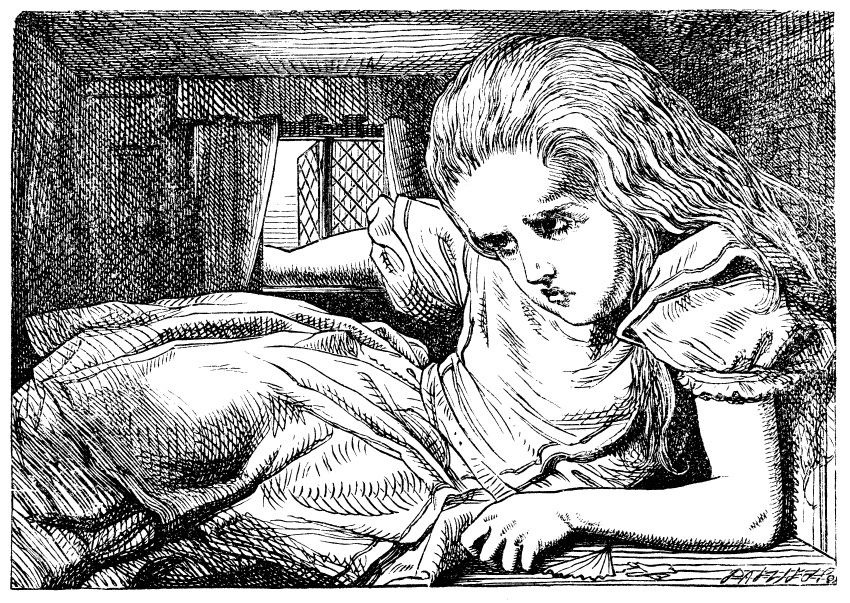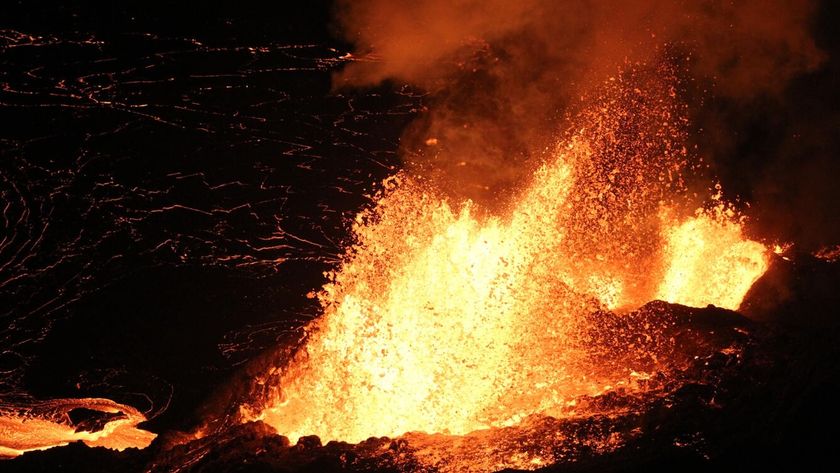'Alice in Wonderland Syndrome' Caused by Acid Flashback

Lewis Carroll's delightful children's novel "Alice's Adventures in Wonderland" turns 150 this year. But there's another, less celebrated Wonderland-related anniversary occurring this year: the discovery of "Alice in Wonderland syndrome" (AIWS), a disorder named in honor of the book.
This syndrome, named in 1955 by British psychiatrist John Todd, has long been known to co-occur with some migraines. A new case study, however, reveals that headaches aren't the only cause of AIWS.
The patient in the study, a 26-year-old man, came to psychiatrists with a history of using alcohol, marijuana and LSD (lysergic acid diethylamide, a psychedelic drug). During LSD trips, the man said, he'd frequently perceive objects and people all out of proportion— things would look too big, too small, or farther or closer than they actually were. [Trippy Tales: The History of 8 Hallucinogens]
These perceptual distortions are the hallmark of Alice in Wonderland syndrome, so dubbed because Alice experiences some very similar symptoms during her journey through Wonderland in Lewis Carroll's tale.
![2015 is the 150th anniversary of the publication of Lewis Carroll's children's fantasy book. [See full infographic]](https://cdn.mos.cms.futurecdn.net/orAtyhP4nJH54XyFmLSp7E-320-80.jpg)
"One side will make you grow taller, and the other side will make you grow shorter," the hookah-smoking Caterpillar tells Alice, referring to a mushroom that had been its perch.
Strange trip
Alice's trippy journey has raised many comparisons to an LSD high, so perhaps it's no surprise that the young man experienced these symptoms while on the drug. The strange thing about the new case report is that the man was no longer taking LSD when he experienced these symptoms. After a bad trip, he'd sworn off drugs. But the Alice in Wonderland symptoms continued.
Sign up for the Live Science daily newsletter now
Get the world’s most fascinating discoveries delivered straight to your inbox.
"To the best of our knowledge, this is the first reported case of AIWS which persist[s] after LSD interruption," clinicians Arturo Lerner, of Lev Hasharon Mental Health Medical Center and Sackler School of Medicine at Tel Aviv University, and Shaul Lev-Ran of Sheba Medical Center in Israel, wrote in the Israel Journal of Psychiatry.
In other words, the man's acid flashbacks (properly known in the scientific parlance as "hallucinogen persisting perception disorder") were manifesting as Alice in Wonderland syndrome.
It's not clear why the AIWS persisted, and the patient refused any treatment with psychotropic medications. After about a year, the perception distortions went away, the researchers wrote.
Lewis Carroll's migraines
But AIWS may not always be related to drugs; it's sometimes part of migraine auras, said Sheena Aurora, a neurologist and migraine specialist at the Stanford University School of Medicine. It's a rare phenomenon — auras occur in only 20 percent of migraine patients, and AIWS is seen in an even smaller subset of patients, Aurora told Live Science.
The syndrome appears to be caused by a hypersensitivity of the brain, Aurora said. This hypersensitivity typically starts in the occipital lobe, the visual region at the back of the brain. However, it can spread to the parietal lobes, which sit just in front of the occipital lobe.
"The parietal area is what discerns sizes and shapes," Aurora said.
Though Lerner and his colleagues did not investigate the biological basis of their patient's condition, they suggested that LSD might have a temporary toxic effect on the lateral geniculate nucleus, an area of the brain involved in visual perception. Temporary impairment of this region could cause macropsia (seeing things as too big), micropsia (seeing things as too small), pelopsia (seeing things as too close) and teleopsia (seeing things as too far away).
There are no historical records to suggest that Carroll ever tried psychedelic drugs. He did, however, record experiences with migraines in his journals, leading to speculation that the author's migraine auras inspired Alice's size-related adventures.
Follow Stephanie Pappas on Twitterand Google+. Follow us @livescience, Facebook& Google+. Original article on Live Science.

Stephanie Pappas is a contributing writer for Live Science, covering topics ranging from geoscience to archaeology to the human brain and behavior. She was previously a senior writer for Live Science but is now a freelancer based in Denver, Colorado, and regularly contributes to Scientific American and The Monitor, the monthly magazine of the American Psychological Association. Stephanie received a bachelor's degree in psychology from the University of South Carolina and a graduate certificate in science communication from the University of California, Santa Cruz.
Most Popular






